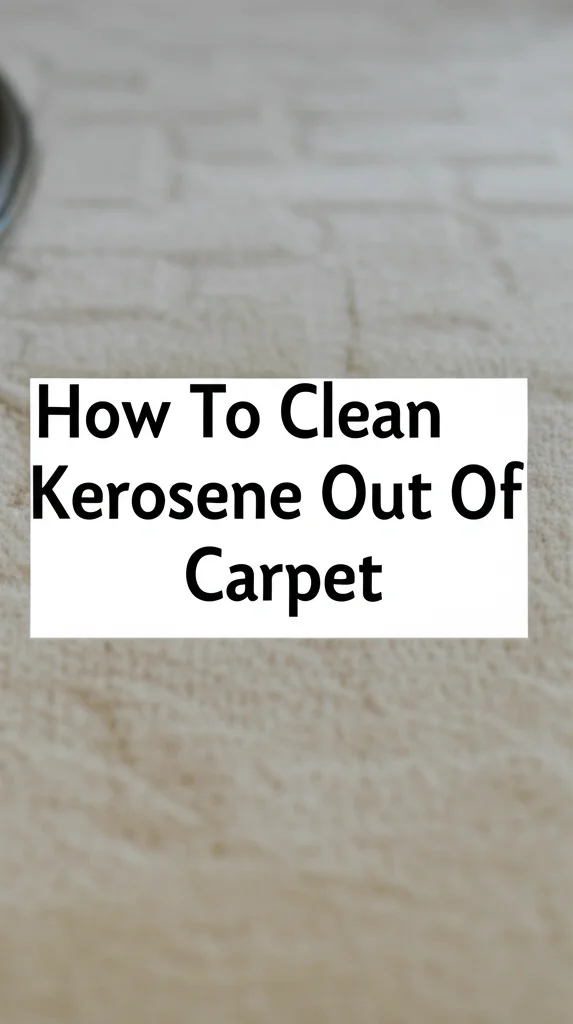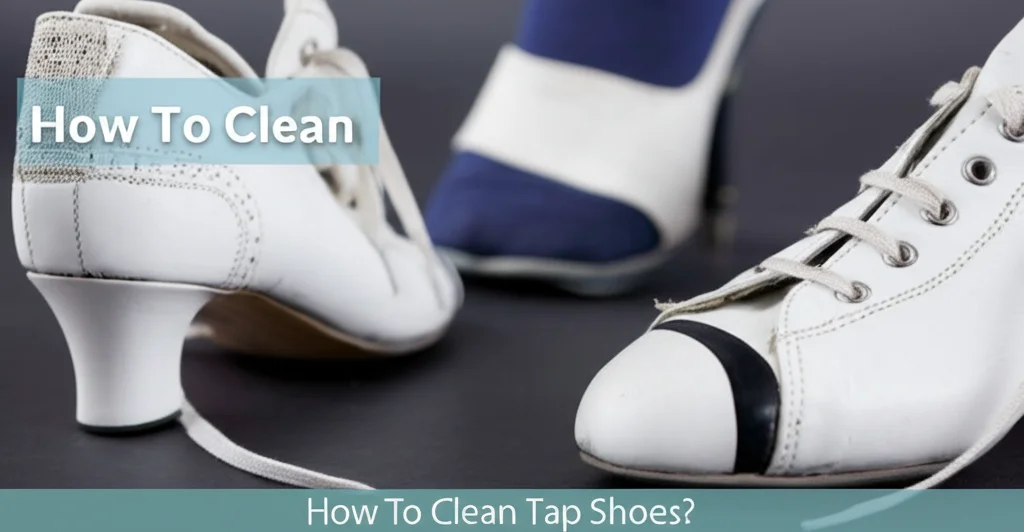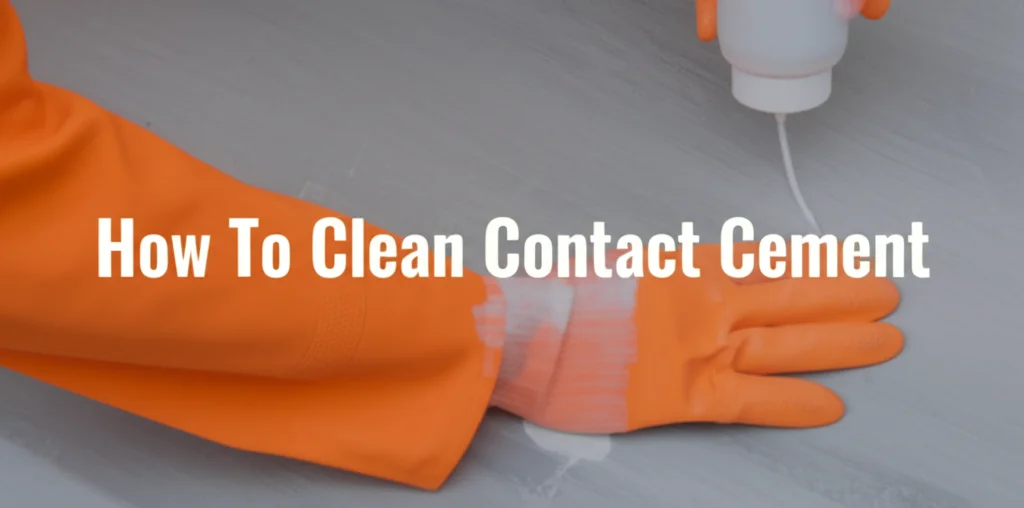· Cleaning Guides · 8 min read
How To Clean Kerosene Out Of Carpet

Dealing with a Kerosene Spill on Your Carpet?
Kerosene spills on carpets are a serious concern, not just for the visible stain, but also for the lingering odor and potential fire hazard. If you’ve recently experienced a kerosene spill, acting quickly and correctly is crucial. This guide will walk you through a step-by-step process for how to clean kerosene out of carpet, minimizing damage and restoring your home’s safety and freshness. We’ll cover everything from initial safety precautions to deep cleaning methods and odor elimination. Let’s get started and tackle this spill effectively!
Takeaway:
- Safety First: Ventilate the area and eliminate ignition sources.
- Absorb the Spill: Use absorbent materials like paper towels or baking soda.
- Clean with Detergent: A mild dish soap solution is effective for lifting kerosene.
- Rinse Thoroughly: Remove all traces of soap to prevent residue.
- Deodorize: Baking soda or enzymatic cleaners can neutralize lingering smells.
Quick Answer:
To clean kerosene from carpet, immediately blot up as much liquid as possible, then apply baking soda to absorb the remaining kerosene. After vacuuming, gently clean with a mild dish soap solution, rinse thoroughly, and deodorize with baking soda or an enzymatic cleaner.
Understanding the Risks of Kerosene on Carpet
Kerosene is a highly flammable liquid, making a spill a potential fire hazard. It’s also a solvent, meaning it can dissolve carpet fibers and backing, causing lasting damage. Beyond the immediate danger, kerosene has a strong, unpleasant odor that can permeate your home. Understanding these risks is the first step in handling the situation effectively. Ignoring a kerosene spill isn’t an option; prompt action is essential for safety and carpet preservation. The volatile nature of kerosene means the fumes can also be harmful to breathe, so ventilation is key.
Immediate Actions: Safety and Containment
Before you even think about cleaning, prioritize safety. Kerosene is flammable, so the first thing you need to do is eliminate any potential ignition sources. This means turning off all open flames, including pilot lights, and avoiding anything that could create a spark – like flipping light switches. Open windows and doors to ventilate the area thoroughly. This will help dissipate the fumes and reduce the risk of inhalation.
Next, contain the spill. Use paper towels to blot up as much kerosene as possible, working from the outside of the spill inward to prevent it from spreading. Avoid rubbing, as this will only push the kerosene deeper into the carpet fibers. Dispose of the used paper towels safely in a sealed metal container, as they are now a fire hazard.
Absorbing the Remaining Kerosene: The Power of Dry Materials
Even after blotting, some kerosene will remain trapped within the carpet fibers. This is where absorbent dry materials come into play. Baking soda is an excellent choice, as it’s readily available and effective at absorbing liquids and odors. Generously cover the affected area with baking soda, ensuring it’s completely coated.
Let the baking soda sit for at least 24-48 hours, allowing it to draw out the remaining kerosene. You’ll notice the baking soda will clump together as it absorbs the liquid. After the waiting period, thoroughly vacuum the area, removing all traces of the baking soda. For particularly stubborn spills, you may need to repeat this process. Consider using cat litter as an alternative absorbent if you have a large spill.
Cleaning with a Mild Detergent Solution
Once you’ve absorbed as much kerosene as possible, it’s time to clean the carpet with a mild detergent solution. Avoid harsh chemicals or solvents, as these can damage the carpet fibers or react with the kerosene. A simple solution of warm water and a few drops of mild dish soap is usually sufficient.
Mix the solution in a bucket and gently apply it to the affected area using a clean cloth or sponge. Avoid saturating the carpet; you want to dampen it, not soak it. Gently blot the area, working from the outside inward. If you’re unsure about the carpet’s reaction to the detergent, test it on an inconspicuous area first. You can also explore professional carpet cleaning solutions, but always follow the manufacturer’s instructions carefully. If you’re dealing with a delicate carpet, consider consulting a professional carpet cleaner. You might also find this article helpful when considering other cleaning solutions: https://www.beacleaner.com/how-to-clean-luxury-vinyl-plank-flooring/.
Choosing the Right Detergent
Selecting the right detergent is crucial for effective cleaning without causing further damage. Avoid detergents containing bleach, ammonia, or strong solvents. These ingredients can discolor the carpet or create hazardous fumes when mixed with kerosene. Look for a pH-neutral dish soap that is specifically designed for delicate fabrics. A gentle formula will lift the kerosene without stripping the carpet fibers of their natural oils. Always dilute the detergent properly, following the instructions on the label.
Thorough Rinsing: Removing Soap Residue
After cleaning with the detergent solution, it’s essential to rinse the carpet thoroughly to remove any remaining soap residue. Soap residue can attract dirt and grime, causing the area to become stained again. Fill a clean bucket with fresh, warm water and use a clean cloth or sponge to blot the area repeatedly.
Continue rinsing until the water runs clear, indicating that all the soap has been removed. You can also use a wet/dry vacuum to extract the remaining water from the carpet. This will help speed up the drying process and prevent mold growth. Proper rinsing is often overlooked, but it’s a critical step in achieving a clean and fresh carpet.
Eliminating Lingering Odors: Deodorizing Your Carpet
Even after cleaning, a kerosene spill can leave behind a lingering odor. This odor can be unpleasant and even harmful to your health. Fortunately, there are several effective ways to deodorize your carpet.
Baking soda is once again a great option. Sprinkle a generous amount of baking soda over the affected area and let it sit for several hours, or even overnight. Vacuum up the baking soda thoroughly. For more stubborn odors, consider using an enzymatic cleaner. Enzymatic cleaners contain enzymes that break down the odor-causing molecules, effectively neutralizing the smell. Follow the manufacturer’s instructions carefully when using an enzymatic cleaner. You can also try placing bowls of vinegar or activated charcoal around the room to absorb odors. If the smell persists, professional odor removal services may be necessary. You might also find this article helpful: https://www.beacleaner.com/how-to-remove-baking-soda-residue-from-carpet/.
Preventing Future Spills and Maintaining Carpet Cleanliness
Prevention is always better than cure. Store kerosene and other flammable liquids in a secure location, away from carpets and other flammable materials. Use drip trays or containers to catch any spills that may occur. Regularly vacuum your carpets to remove dirt and debris, which can help prevent stains from setting in. Consider applying a carpet protector to help repel spills and make cleaning easier.
If you do experience a spill, act quickly and follow the steps outlined in this guide. Regular carpet cleaning can also help maintain its appearance and prevent the buildup of odors. You can find more information on general carpet care here: https://www.beacleaner.com/how-to-clean-a-carpet-with-a-wet-dry-vac/.
Frequently Asked Questions (FAQs)
Q: Is kerosene a fire hazard on carpet? A: Yes, kerosene is highly flammable. A spill poses a significant fire risk, so immediate action to eliminate ignition sources and ventilate the area is crucial. Dispose of any contaminated materials (like paper towels) safely in a sealed metal container.
Q: Can I use bleach to clean kerosene off carpet? A: No, absolutely not. Bleach can react with kerosene, creating dangerous fumes and potentially damaging the carpet fibers. Always use a mild detergent solution instead.
Q: How long does it take to get rid of the kerosene smell? A: The time it takes to eliminate the odor depends on the severity of the spill and the effectiveness of your cleaning efforts. It can take several days or even weeks for the smell to completely dissipate. Using baking soda and enzymatic cleaners can help speed up the process.
Q: What if the kerosene stain won’t come out? A: If the stain persists after repeated cleaning attempts, it’s best to consult a professional carpet cleaner. They have specialized equipment and cleaning solutions that can effectively remove stubborn stains.
Q: Is it safe to vacuum after a kerosene spill? A: It’s safe to vacuum after you’ve absorbed the majority of the kerosene and allowed the area to dry completely. Be sure to use a vacuum with a HEPA filter to capture any remaining particles.
Conclusion: Restoring Your Carpet and Peace of Mind
Cleaning kerosene out of carpet requires a swift, methodical approach. Remember, safety is paramount – eliminate ignition sources and ventilate the area first. Absorb the spill with dry materials like baking soda, clean with a mild detergent solution, rinse thoroughly, and deodorize to eliminate lingering odors. By following these steps, you can effectively remove kerosene from your carpet and restore your home to a safe and comfortable environment. Don’t hesitate to seek professional help if the spill is extensive or the odor persists. Taking action now will protect your carpet and your family’s well-being. If you’re looking for more cleaning tips, check out our guide on how to get grease out of carpet: https://www.beacleaner.com/how-to-get-grease-out-of-carpet/.




